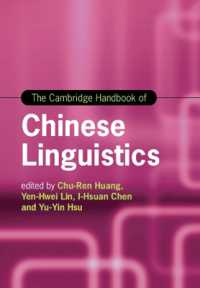Full Description
The book explores young Arabic-speaking children's English language learning. Through classroom-based research and learner work samples, the book analyses the interplay between cultural norms and the critical role that teachers play in orchestrating classroom discourse through skillful use of available instructional materials, questioning strategies and feedback to learners. The author shows the potential of instructional materials to influence young learners' vocabulary, reading comprehension, and written production, as well as the way they acquire the academic literacies needed in school subjects taught in English. She reviews the spread of the practice of teaching English to young and very young children and the increasing demand for English-medium instruction in the Arabic-speaking region, with a particular focus on the negative transfer from Arabic to English spelling and grammar. The book also discusses the importance of story narratives, arguing they are an ideal medium for language teaching because of their rich linguistic repertoire and the strong motivational force that stories have on young language learners and their cognitive growth, essential to their later academic success. Taken together, the research findings and classroom vignettes suggest that children's language learning happens within a complex system of interactive variables and cultural norms and expectations.
Contents
Introduction
Part I: Theoretical Considerations
1. Cultural Norms and Expectations versus Teaching Materials
2. Narrative and Children's Language Learning
3. The Challenge of English-medium Instruction
Part II: Insights from Classroom Research
4. Teacher Questions versus Learner Engagement
5. Classroom Discourse and the Critical Role of Teaching Materials
6. Instructional Materials and Vocabulary and Reading Comprehension
7. Writing Outcomes after a Reading-Based Experiment
8. An Action Research Study on Reading Strategies
9. Literate Language from Storybooks
10. Young Arabic-speaking Learners' Spelling Skills
11. Transfer from Arabic Grammar to Children's English
Part III: Teachers and Students in Action
12. Whole Language Experience in Kindergarten
13. Flexibility of Story-Based Approaches
14. Children's Diverse Reactions to Stories
15. Teacher Effectiveness and Learner Engagement
16. Conclusions
References
Index






